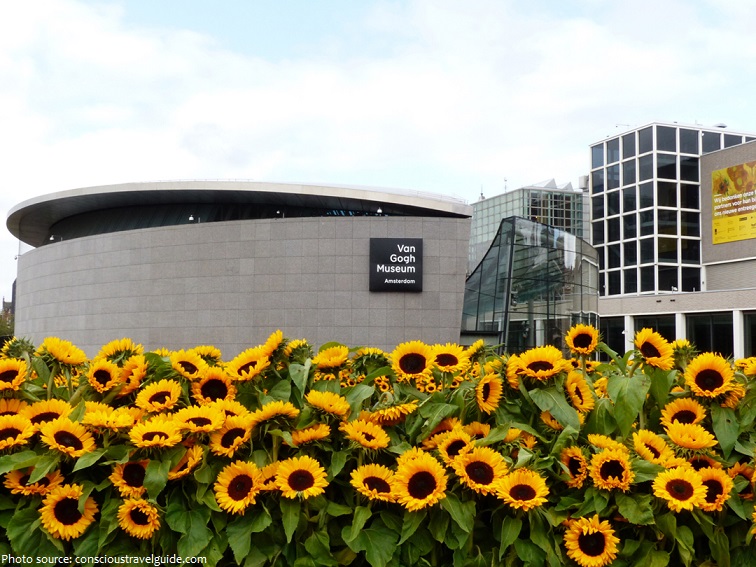
VAN GOGH MUSEUM WORKS: THE MASTERPIECES YOU MUST SEE
Van Gogh Museum works you must see to avoid exiting the museum, which is the necessary stop of any journey to Amsterdam, without stopping in front of the most important masterpieces.
It’s not easy to make a selection of the most important works of art, because it’s not only the museum housing the world’s largest collection of paintings by Van Gogh, but it’s a journey into the anguished life of the painter.
For more information about his life, read the post Vincent Van Gogh: 5 things to know. Instead, to discover which works to admire at the Van Gogh Museum of Amsterdam, this is the post you need.
Van Gogh Museum works
On the YouTube channel of The Art post Blog, I publish a video a week on museums, masterpieces and cities of art. Watch all the videos uploaded and subscribe to the channel.
VAN GOGH MUSEUM ARTWORKS TO SEE
Before visiting the Van Gogh museum you need to know that you’d better book your admission ticket.
In fact, it’s one of Amsterdam’s most important museums and houses the largest collection of works by Vincent Van Gogh, and booking your ticket will make you skip the line at the entrance and follow the tour with an audio guide.
Booking allows you to skip the line at the entrance and follow the tour with an audio guide. To make a reservation go straight to the Van Gogh Museum’s ticket information page.
Here are the works you can’t miss!
THE POTATO EATERS
Considered the artist’s first masterpiece, it’s a painting in which Van Gogh portrays a family of Dutch peasants.
The colours are dark and depict the hard life of a family gathering each evening to have a poor meal.
The artist’s first works focus on the social issues of the countries where Van Gogh lives, and the bright colours of his most important paintings still seem far away.
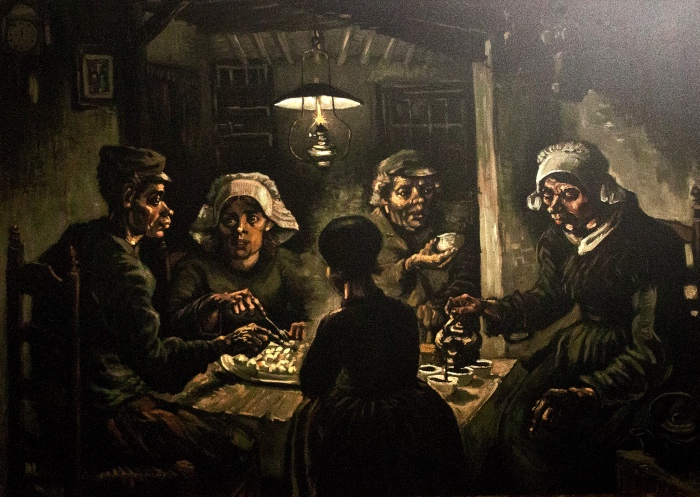
The Potato Eaters
THE BEDROOM
Van Gogh did three paintings depicting his bedroom in Arles.
The artworks were painted between 1888 and 1889 and are on display in three different museums: the Van Gogh Museum of Amsterdam, the Art Institute of Chicago and the Musée d’Orsay of Paris.
The painting housed in Amsterdam is maybe the most famous and was painted while Van Gogh was waiting for Paul Gauguin’s arrival in Arles.
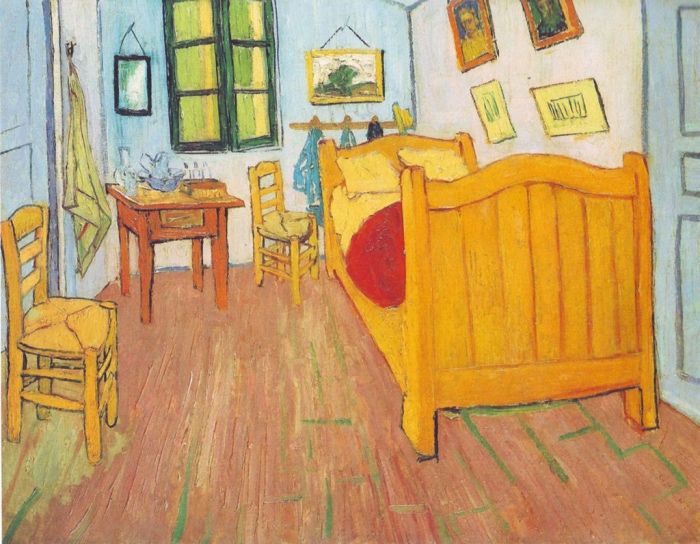
The Bedroom
ALMOND BLOSSOM
This branch of an almond tree is Vincent Van Gogh’s gift to his newly born nephew, son of his brother Theo who founded the Van Gogh Museum.
Van Gogh took a branch of a flowering almond tree from the garden of his doctor’s house, and painted it because it represented the first sign of spring, and to him was the symbol of hope for a more peaceful future.
From a stylistic point of view the painting is inspired by Japanese prints Van Gogh knew and loved.
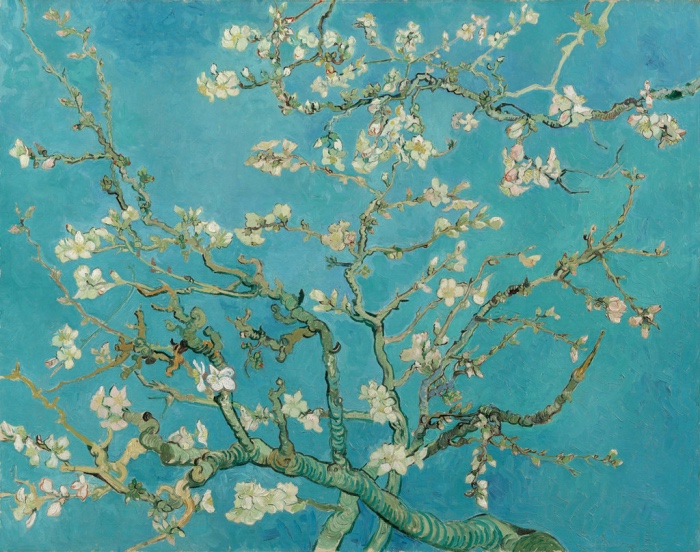
Almond Blossom
WHEATFIELD WITH CROWS
Considered for a long time Van Gogh’s very last painting, many scholars have interpreted it as a sign of his approaching suicide.
The menacing sky, the dead-end path, the wind which seems to blow incessantly, and the black crows seem to predict nothing good.
It is actually a painting in which Van Gogh continues to carry out a research on colours and a brushstroke able to represent the inner image of what the artist sees.
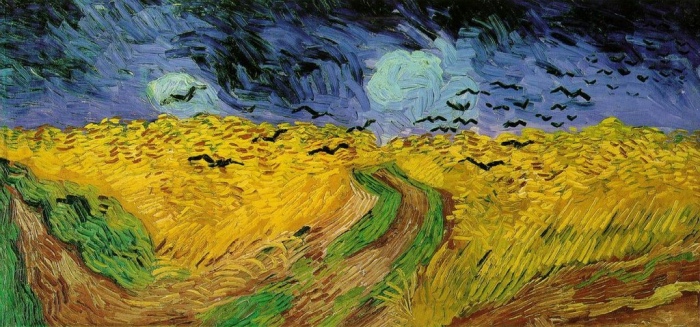
Wheatfield with Crows
SUNFLOWERS
Among the masterpieces and works of Van Gogh are famous the “Sunflowers”, also present in the museum of Amsterdam.
It is a subject that the artist often painted, so much so as to create a series, created between 1888 and 1889, made up of works that are now spread all over the world and named “Arles Series”.
Today there are 5 paintings of the Sunflowers from the entire series, scattered in museums all over the world: National Gallery, London; Van Gogh Museum, Amsterdam; Neue Pinakothek, Munich; Philadelphia Museum of Art, Philadelphia; Seiji Togo Memorial Sompo Japan Nipponkoa Museum of Art, Tokyo.
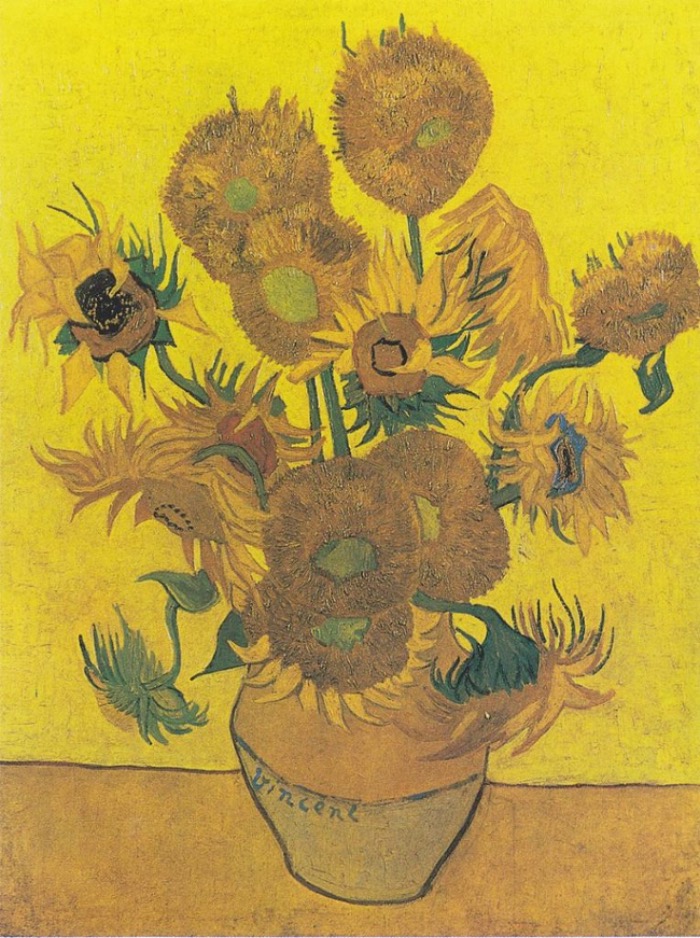
I Girasoli di van Gogh

